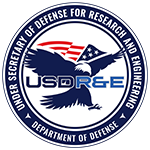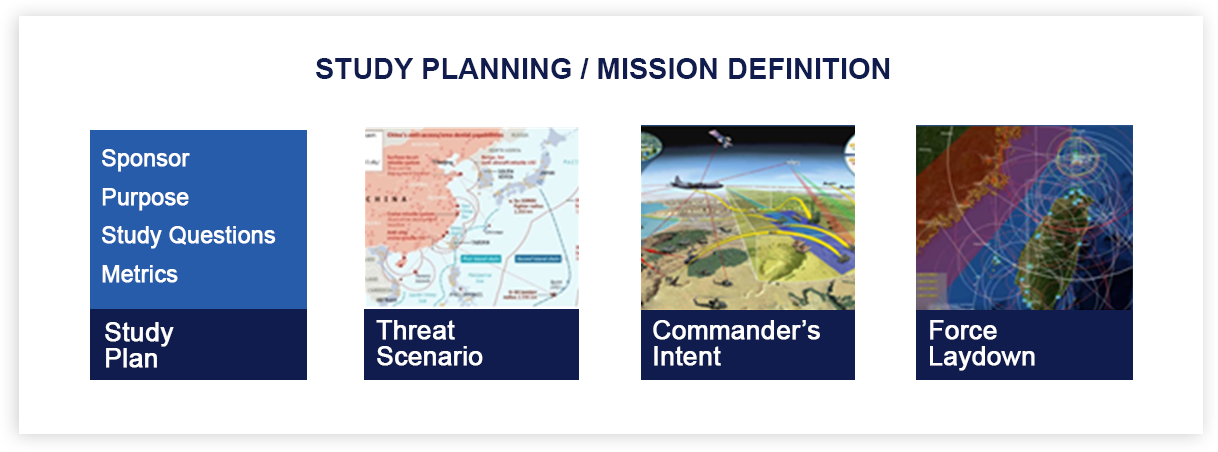ASD(MC), MISSION CAPABILITIES
ASD(MC), MISSION CAPABILITIES
Mission Engineering
Mission Engineering
Mission Engineering (ME) is the deliberate planning, analyzing, organizing, and integrating of current and emerging operational and system capabilities to achieve desired warfighting mission effects.
ME is an analytical and data-driven approach to decompose and analyze the constituent parts of a mission in order to identify measurable trade-offs and draw conclusions.


Mission Engineering studies and analyses seek answers to key technical challenges identified by the OSD, Joint Staff, Services, and Combatant Commands.
OUSD(R&E) develops, implements, and shares the ME process and methodology, best practices, and ME products with a user community across the Department of Defense. In addition, R&E has adopted mission engineering as a key element in the organization and executed ME analyses or studies to evaluate missions and assess efficacy of advanced technology from the modernization areas. These studies are coordinated across numerous stakeholders.
ME Principles
Follow a mission-focused, threat-informed approach to identify capabilities and technologies to achieve mission objectives and close capability gaps.
Evaluate systems and systems of systems (SoS) in an operational mission context to inform stakeholders about building the right things, not just building things right.
Use validated mission definitions and trustworthy and curated data sets as the basis for analyses to answer a set of operational or tactical questions.
Ensure to balance the time frame of interest, analytical rigor to be used, and the complexity of the problem to be addressed.
Begin with the end in mind, a carefully articulated problem statement, the characterization of the mission and identification of metrics, and working through the collection of data and models needed to analyze the mission and document/convey the outputs (results).
Resources
GUIDES
OUSD(R&E) Mission Engineering Guide (MEG - October 2023)
The second edition of this publication replaces the Department of Defense Mission Engineering Guide (MEG) version 1.0 (November 2020).
The MEG version 2.0 serves as a resource to aid current and prospective practitioners in understanding mission engineering principles, methodology, and attributes. The MEG is not a Department of Defense manual, instruction, or directive; rather, the MEG describes the interdisciplinary process of mission engineering. This extensible and scalable process helps to answer questions related to assessing systems or systems of systems (SoS) within a mission context to inform design and integration of current and emergent capabilities to yield desired mission outcomes.
Since its first publication in November 2020, the MEG has undergone practical review and implementation by a diverse community of mission engineers, both within and outside the Department. In this revision, the essential methodology and fundamental elements of the mission engineering process are preserved. The MEG version 2.0 clarifies and expands upon mission engineering best practices, terminology, activities, and products to ensure both novice and expert practitioners have a clear understanding of the purpose, application, and benefits of the mission engineering process.
OUSD(R&E) Mission Architecture Style Guide (December 2024)
The first edition of the Department of Defense Mission Architecture Style Guide provides practical information to help mission architects apply model-based systems engineering approaches and principles outlined in the Mission Engineering Guide.
Mission architectures align mission outcomes, requirements, and capabilities in a systematic manner through visual and relational representations. This enables easier understanding of the mission space, areas of concern, and solution opportunities. The purpose of this guide is to standardize the development of mission architectures to reduce variance and improve communication of ideas represented in descriptive model-based system engineering models.
BRIEFS
Mission Engineering Methodology: Studies and Analysis
The ME study process provides an analytical, data-driven approach to decompose mission elements; collect and analyze trustworthy data for the development of accurate models; develop realistic mission threads and mission engineering threads; and deliver recommendations and artifacts that help inform investment decisions.
ARTICLES
Mission Engineering: Guidance Provides Framework for Work With Industry
Mission Engineering: Ensuring Key Technologies Drive the Joint Warfighting Concept
Embracing Change: Shifting the DOD to an Approach for Modernization and Joint Warfighting Concept Development
Mission Engineering Definitions
CONTACT US
Contact the Mission Engineering Team

ASD(MC)
Assistant Secretary of Defense for Mission Capabilities
The Pentagon, Washington, DC 20301
Contact Us
Information for ASD(MC): Contact OUSD(R&E) Staff
Social Media: @DoDCTO on Twitter
For website issues: Contact Webmaster

